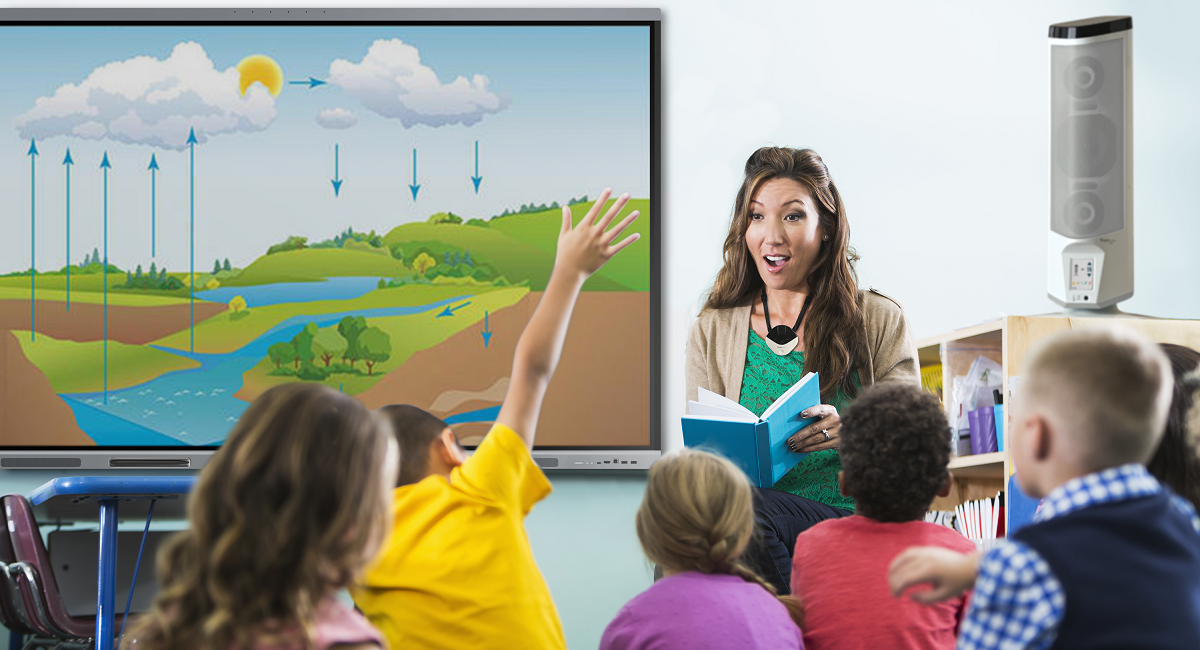
Good communication is essential between teacher and student. When teachers communicate effectively with their students, the impact on learning is clear – students have a better understanding of what’s being taught. Of course, the flip side is that when class communication breaks down there is misunderstanding and frustration by both teacher and students which can impede learning. If you’re a teacher and you’ve felt this frustration because your students couldn’t hear you or misunderstood what you said, here are four steps to try to improve communication.
1. What is Your Communication Style?
Do you know what your strengths are when it comes to communicating? What about your needs for improvement? One way to figure this out is to keep a running record of notable conversations with students. Consider both positive and negative experiences to create a complete picture of how well or poorly communications have gone over time. Note tone, volume, modulation, and pace in various interactions and how they might have been perceived. If you’re feeling brave, poll your students on your communication efforts and what they think could improve. Using a polling app or software, have students respond to questions such as:
- On a scale from 1 to 5, how comfortable are you raising your hand to answer a question?
- True or False: If I’m confused about a topic, I ask a question so I can understand.
- My teacher gives me specific feedback -
-
- All the time
- Most of the time
- Sometimes
- Not at all
The polling app can show feedback in graphical form. Review the data with the class. This can help build buy-in to communication improvement efforts for the class.
2. Adapt Communication Styles and Teaching Strategies
Once you’ve got a good understanding of your communication style, it’s time to adapt your teaching strategies accordingly. Be prepared – this is a trial-and-error process. For example, if you’re generally direct in your interactions with students posing yes/no, closed-ended questions try using more open-ended questions. Open-ended questions help students feel comfortable about responding, regardless of their level of knowledge about a particular topic. This does require patience on your part – give students enough time to share their thoughts before moving on to the next question or idea. Control the urge to answer for them and instead, ask leading questions as needed.
Whatever your communication style, endeavor to be clear, concise, and positive when possible. Avoid using generalities such as “Good job” or “Nice try.” Be specific. For example, if a student did well on an activity but there is room for improvement, say something like, “The details you added about the setting were vivid. I could visualize this place in my mind. On your next draft, try adding in other senses such as the sounds of the animals nearby or smells of the flowers in the area.” Remember that interaction given in an encouraging and uplifting way can lead the student to feel confident, supported, and understood.
Using a soft voice and making eye contact, while speaking calmly, may lead the student to listen receptively and respond positively. Classroom audio systems are very useful for this adapted communication style so that you can use a ‘natural voice’ (versus a harsh, loud tone that could lead to a complete shutdown by the student). For instance, a teacher microphone amplifies your natural voice which can be more conducive to building a sense of trust between you and your student. A quality sound system can also ensure that your voice is clearly heard, reducing the chance of the student mishearing and misinterpreting your message.
In addition to the volume and tone of your voice, be aware of your body language, gestures, and facial expressions. All these nonverbal cues can convey a message that words alone may not.
3. Set expectations
Now that you’re adapting your communication and teaching styles, including positive language and body language, it’s time to set clear academic and behavioral expectations for you and your students. Make sure that these expectations are realistic, achievable, and consistent. Develop a list with your students and save it for review throughout the year. If you have an interactive display, save the list, and revise them as needed. You can also display one of the expectations every week as a goal for all. Reward the class when expectations are met regularly, such as a class karaoke party or special field day with activities that your students decide on together. Shared expectations can nurture stronger class relationships and a sense of community.
4. Practice, practice, and then practice some more
Continue to work on improving your communication style and strategies regularly. If you’ve continued to keep anecdotal records of conversations, revisit them, and note strengths and weaknesses. Speak with colleagues about how they approach different situations or students. Read about, or participate in educator webinars on, teaching strategies, best practices, and classroom management techniques. Talk through scenarios with others outside of teaching who can offer different perspectives and feedback. If possible, implement technology that can optimize teaching and learning in the classroom. For example, a class audio system with a teacher and student mics can alleviate the need to fight ambient noises that could undermine communication efforts.
Most importantly, be forgiving of yourself. There is always room for improvement when it comes to communication. The key is to reflect, adapt, and keep trying continuously and consistently.
To explore educational technology solutions that help improve interactive learning and classroom audio, go to boxlight.com.



